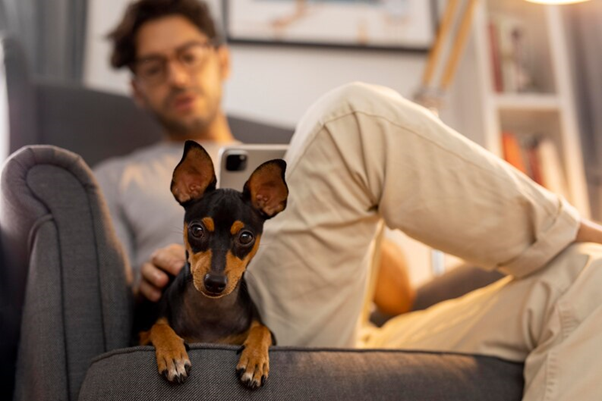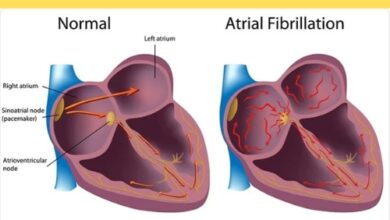Dealing with Separation Anxiety in Dogs

Intro
Separation anxiety is a common issue faced by many dog owners. It occurs when dogs become distressed and anxious when left alone for extended periods of time. This can lead to destructive behaviors, excessive barking, and even self-harm. As a responsible pet owner, it is important to understand and address this problem for the well-being of both your furry friend and your household. We will discuss the causes and symptoms of separation anxiety in dogs, as well as effective strategies to help manage and overcome it. We will also explore how joining a veterinarian email list can provide valuable resources and support for dealing with this challenging issue.
Understanding Separation Anxiety in Dogs
Separation anxiety in dogs is a complex and often misunderstood condition that can significantly impact both the dog and its owner. It is important for dog owners to understand what separation anxiety is and how it manifests in their furry friends in order to effectively address and manage the issue.
Separation anxiety is not simply a case of a dog being unhappy or bored when left alone. It is a genuine fear and distress that can cause a range of behavioral problems. Some common signs of separation anxiety include excessive barking or howling, destructive chewing or digging, pacing or restlessness, and even self-harm such as excessive licking or biting.
To better understand this condition, it can be helpful to join a veterinarian mailing list. These resources can provide valuable information and guidance on how to identify and address separation anxiety in dogs. Additionally, they can offer support and tips from professionals who have experience dealing with this challenging issue.
By understanding separation anxiety in dogs, pet owners can take the necessary steps to help their furry friends feel more secure and comfortable when left alone. We will explore the signs, causes, and solutions for separation anxiety, as well as the benefits of seeking professional help. Stay tuned for helpful tips on how to prevent future anxiety and build confidence and trust with your dog.
Signs Your Dog Might be Experiencing Separation Anxiety
If you suspect that your furry friend might be experiencing separation anxiety, it’s important to be able to recognize the signs. While every dog is different, there are a few common behaviors that can indicate your dog is struggling with being left alone.
One of the most obvious signs is excessive barking or howling when you leave the house. Your neighbors might even start complaining about the constant noise. Another telltale sign is destructive behavior, such as chewing on furniture or digging holes in the yard. If you come home to find your belongings in disarray or your yard torn apart, it could be a clear indication that your dog is anxious when left alone.
Restlessness and pacing are also common signs of separation anxiety. Your dog might seem unable to settle down and constantly be on the move when you’re not around. And if you notice that your furry friend is excessively licking or biting themselves, it could be a sign of self-harm caused by anxiety.
If you’re unsure whether your dog is experiencing separation anxiety or if their behaviors could be attributed to something else, joining a veterinarian mailing list can be incredibly helpful. These resources can provide valuable information and guidance on identifying the signs of separation anxiety and offer support from professionals who have dealt with this issue before.
In the next section, we will delve deeper into the possible causes of separation anxiety in dogs, helping you better understand what might be triggering your pet’s distress.
Possible Causes of Separation Anxiety in Dogs
Separation anxiety in dogs can have a variety of causes, and understanding these triggers is crucial for addressing and managing the issue. While every dog is unique, there are some common factors that can contribute to separation anxiety.
One possible cause of separation anxiety is a lack of proper socialization during a dog’s early developmental stages. Dogs that were not exposed to different people, animals, and environments as puppies may have difficulty adjusting to being alone later in life. Similarly, dogs that have experienced traumatic events, such as being abandoned or abused, are more prone to developing separation anxiety.
Changes in routine can also trigger separation anxiety in dogs. Dogs thrive on consistency, so major disruptions to their daily routine, such as a move to a new home, the arrival of a new family member, or a change in work schedule, can cause distress and anxiety when left alone.
Additionally, some dogs are simply more prone to anxiety due to their genetic predisposition. Certain breeds, such as Labrador Retrievers, German Shepherds, and Cocker Spaniels, are known to be more susceptible to separation anxiety.
By being aware of these possible causes, pet owners can better understand why their dogs are experiencing separation anxiety and take appropriate steps to help them overcome it. Seeking guidance from a veterinarian mailing list can provide additional insights and strategies for addressing the root causes of separation anxiety and implementing effective solutions.
Solutions and Coping Mechanisms for Dogs With Separation Anxiety
Dealing with separation anxiety in dogs can be a challenging and frustrating experience for both pet owners and their furry friends. However, there are several solutions and coping mechanisms that can help alleviate the distress caused by this condition.
One effective strategy is to gradually desensitize your dog to being alone. Start by leaving them alone for short periods of time and gradually increase the duration as they become more comfortable. Provide them with interactive toys or puzzles to keep them mentally stimulated and distracted while you’re away.
Another helpful technique is to create a safe and comforting environment for your dog. This can include leaving out familiar scents, such as an unwashed t-shirt or blanket, that provide a sense of security. You can also try playing soothing music or leaving on a TV or radio to provide background noise.
In some cases, professional help may be necessary. A veterinarian or animal behaviorist can provide expert guidance and may recommend techniques such as behavior modification or medication to help manage your dog’s anxiety.
Remember, consistency is key when implementing any coping mechanisms or solutions. Stick to a routine and avoid making sudden changes that can trigger anxiety. By taking a proactive approach and seeking support when needed, you can help your dog feel more secure and content when left alone.
Professional Help for Treating Canine Separation Anxiety
Dealing with separation anxiety in dogs can be a daunting task, and sometimes professional help is needed. If you have tried various strategies and your dog is still struggling with separation anxiety, it may be time to seek guidance from a veterinarian or animal behaviorist.
These professionals have extensive knowledge and experience in dealing with canine separation anxiety and can provide valuable insights and solutions tailored to your specific situation. They can assess your dog’s behavior and determine the best course of action to help alleviate their distress.
One common technique used by professionals is behavior modification. This involves gradually exposing your dog to the situations that trigger their anxiety and teaching them alternative behaviors to replace their anxious responses. It may include desensitization exercises and teaching your dog how to self-soothe.
In some cases, medication may be recommended to help manage your dog’s anxiety. Anti-anxiety medications can help reduce their overall anxiety levels and make them more receptive to behavior modification techniques. It’s important to work closely with a professional to determine the right medication and dosage for your dog.
Remember, seeking professional help is not a sign of failure as a pet owner. It is a proactive step towards providing the best care and support for your furry friend. With the guidance of a professional, you can effectively manage and treat your dog’s separation anxiety, helping them feel more secure and content when left alone.
Preventing Future Anxiety – Building Confidence and Trust
Now that you’ve learned about the causes, signs, and solutions for separation anxiety in dogs, let’s explore how you can prevent future anxiety and help your furry friend build confidence and trust.
One of the most important things you can do is establish a consistent routine for your dog. Dogs thrive on predictability, so try to stick to a regular schedule for feeding, exercise, and alone time. This will create a sense of stability and help your dog feel more secure.
Additionally, it’s crucial to provide plenty of mental and physical stimulation for your dog. Regular exercise, playtime, and training sessions can help release excess energy and keep your dog’s mind occupied. Consider introducing puzzle toys or interactive games that challenge their problem-solving skills. Engaging your dog’s mind will help prevent boredom and anxiety when left alone.
Building positive associations with being alone is another effective strategy. Start by leaving your dog alone for short periods of time and gradually increase the duration. Leave them with a special treat or toy that they only get when they’re alone. This will help them associate being alone with something enjoyable and rewarding.
Lastly, remember to be patient and understanding throughout the process. Overcoming separation anxiety takes time and effort, but with consistent training and support, your dog can learn to feel more comfortable and confident when left alone.
By implementing these strategies and seeking professional help when needed, you can help your furry friend overcome separation anxiety and lead a happier, more balanced life. Remember, you’re not alone in this journey, and with the right tools and support, you and your dog can conquer separation anxiety together.
Conclusion
As a responsible dog owner, it is crucial to understand and address separation anxiety in dogs. This common issue can have a significant impact on both your furry friend and your household. Throughout this blog post, we have discussed the causes, signs, and solutions for separation anxiety, as well as the benefits of seeking professional help and joining a veterinarian email list for support and resources.
By understanding separation anxiety and recognizing the signs, you can take the necessary steps to help your dog feel more secure and comfortable when left alone. We explored various strategies, such as gradual desensitization, creating a comforting environment, and seeking professional guidance when needed. Consistency and patience are key in implementing these solutions.
Preventing future anxiety is equally important. Establishing a consistent routine, providing mental and physical stimulation, and building positive associations with alone time can help your dog feel more confident and reduce their anxiety.
Author Bio
My name is William shakes and I’m a business strategist who specializes in sales, outreaching and marketing strategies for businesses of all sizes, currently working at AverickMedia one of the leading providers of b2b data. I have a deep understanding of what it takes to drive success and have an extensive network of industry experts that I can draw upon when needed.




